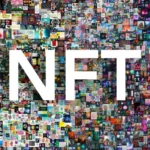Blockchain technology has become one of the most talked-about innovations of the 21st century. From powering cryptocurrencies like Bitcoin to enabling secure digital transactions across industries, its potential is massive.
But what exactly is blockchain, and how does it work? In this article, we will break down blockchain technology in simple terms and expand on its uses, benefits, challenges, and future potential.
What is Blockchain?
At its core, a blockchain is a digital ledger. Think of it as a book that records transactions. However, instead of being stored in one place or controlled by a single authority, it’s decentralized and distributed across multiple computers, known as nodes.
Key Characteristics:
| Feature | Description |
|---|---|
| Decentralization | No central authority controls the data. |
| Transparency | All participants can view the records. |
| Immutability | Once data is added, it cannot be changed. |
| Security | Encrypted and verified by consensus mechanisms. |
Basic Components:
- Blocks: Each block contains data (e.g., transactions), a timestamp, and a cryptographic hash of the previous block.
- Chain: Blocks are linked together in chronological order.
- Nodes: Computers that validate and store the blockchain.
How Does Blockchain Work?
- Transaction Initiation: A user initiates a transaction (e.g., sending cryptocurrency).
- Broadcast: The transaction is broadcast to the network of nodes.
- Validation: Nodes use consensus algorithms (like Proof of Work or Proof of Stake) to verify the transaction.
- Block Creation: Verified transactions are bundled into a block.
- Chain Addition: The new block is added to the existing blockchain.
- Completion: The transaction is completed and recorded.
Types of Blockchains
| Type | Description | Use Cases |
|---|---|---|
| Public | Open to anyone (e.g., Bitcoin, Ethereum). | Cryptocurrency, open-source projects. |
| Private | Controlled by an organization. | Internal business operations. |
| Consortium | Shared between organizations. | Supply chain, banking. |
| Hybrid | Combination of public and private. | Healthcare, government. |
Real-World Applications of Blockchain

Cryptocurrencies
The most well-known application. Bitcoin, Ethereum, and others use blockchain to operate without central banks.
Supply Chain Management
Blockchain provides transparency and traceability in logistics, reducing fraud and improving accountability.
Healthcare
Patient data can be securely stored and accessed across providers with privacy and integrity.
Banking and Finance
Cross-border payments, smart contracts, and fraud prevention are key blockchain use cases.
Voting Systems
Blockchain can enable secure and transparent digital voting.
Real Estate
Property records, land titles, and transactions can be securely stored and transferred.
Intellectual Property and Digital Rights
Artists and creators can protect and monetize their work using blockchain-based licensing systems.
Benefits of Blockchain Technology
| Benefit | Explanation |
|---|---|
| Security | Data is encrypted and decentralized, reducing risk of hacks. |
| Transparency | All participants have access to the same information. |
| Efficiency | Eliminates intermediaries, speeds up transactions. |
| Cost Savings | Reduces administrative and operational costs. |
| Trust | Encourages trust through immutable records. |
Challenges of Blockchain Technology
- Scalability: Blockchain networks can be slow and energy-intensive, especially public ones.
- Regulation: Lack of clear legal frameworks can hinder adoption.
- Integration: Adopting blockchain into legacy systems can be complex and costly.
- User Awareness: Understanding and trust among the general public is still limited.
- Security Threats: While the blockchain itself is secure, apps and platforms built on top can have vulnerabilities.
Blockchain vs Traditional Databases
| Feature | Blockchain | Traditional Database |
|---|---|---|
| Centralization | Decentralized | Centralized |
| Data Modification | Immutable | Editable |
| Transparency | High | Controlled |
| Security | Cryptographic + Consensus | Role-based |
| Speed | Slower (in most cases) | Faster |
| Cost | Potentially higher upfront cost | Lower upfront, higher ongoing |
Future of Blockchain

The future of blockchain is not limited to finance or cryptocurrency. With the rise of Web3, NFTs, decentralized finance (DeFi), and the metaverse, blockchain is poised to reshape the internet and how we interact digitally.
Trends to Watch:
- Decentralized Identity (DID)
- Interoperability between blockchains
- Eco-friendly consensus mechanisms (e.g., Proof of Stake)
- Tokenization of assets (stocks, real estate, art)
- Government adoption and regulation
ALSO READ: How to Store Crypto Coins Securely?
Conclusion
Understanding blockchain technology doesn’t require a computer science degree. At its core, it’s a decentralized way to record and share information. It brings security, transparency, and trust to digital transactions and interactions.
While it’s not without challenges, its applications across industries suggest that blockchain is here to stay. Whether you’re an investor, developer, business leader, or just curious, getting a handle on the basics is a smart move.







